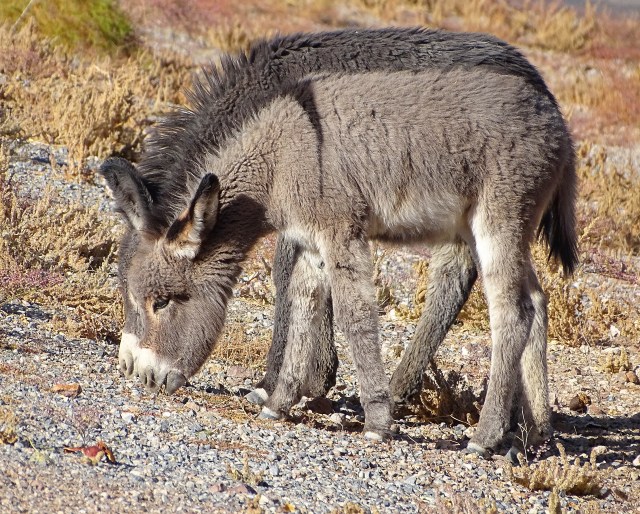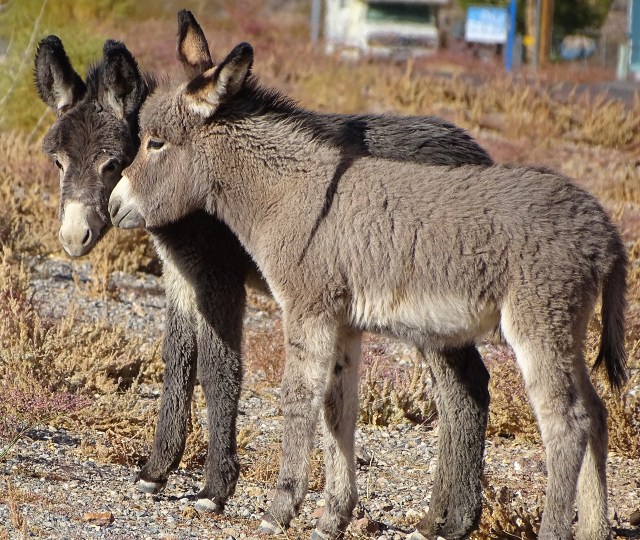
Death Valley National Park is the largest national park in the lower ’48 consisting of 5,270 mi² of barren, beautiful desert. It holds the world record for the hottest place on earth topping out at 134 F in 2013.

Burros (donkeys) were introduced to the park by gold miners in the 1800’s. Some escaped and wild burros have thrived in the park ever since. Burros dig holes to find water and these holes are often used by other desert creatures. Burros are a food source for resident mountain lions, taking pressure off big horn sheep populations.

Burros are not wanted by The National Park Service in Death Valley.

The front page of the 2019 National Park Summer Visitor Guide says burros are an “invasive species……they stomp around and make a mess…they over browse…..they can be mean and aggressive when defending young….they stand in roads and won’t budge.”

This sounds a lot like some of the human visitors I have seen in national parks over the years. But despite this, the park service has pursued a policy of rounding up wild burros by helicopter and horseback, shipping them off to rescue organizations. “Eliminating wild burros from the park has been the park service goal since 2002,” (Pahrump Valley Times).

Having read about the wild burros, and wanting to see the last remaining ones, I decided to go search for them. I started by asking locals where I could find them. Every local I spoke to told the same basic story, which amounted to, “I haven’t seen them in the park. I have seen them outside the boundaries of park.”
One person even said, “It seems they know they are not wanted in the park, so they tend to stay just outside it.”

Pretty clever critters, huh?

The road to Beatty Nevada, a town of 1010 people, just outside the park came up in lots of conversations as a place where wild burros congregate. So off to Beatty we went.
Sure enough, near the outskirts of town, we started to see signs of burro presence, not stomped up messes, but donkey scat. My husband Jim is a patient person, and he was willing to take all sorts of rocky dirt roads following donkey scat. We had no luck, and were about to give up when Jim decided to drive around the perimeter of town, and there they were! A small herd of eight burros, with one dominant male, three foals, and four females. One female was pregnant. Here was the male being protective when we first saw the herd:

After awhile of distant observation, the burros seemed to decide we were not a threat, and walked slowly over and approached us directly, showing no sign of aggression. Mindful of the park literature, I backed away from them, and retreated to the safety of the car.

This was the burros reaction to my retreat!
A Beatty local resident, observing my caution, walked over and introduced us to the burros.

You can see his hand here.
No one should ever approach wild donkeys. They can be aggressive and dangerous when threatened. But this nice local man showed us their other side as well. They can also be friendly, curious and affectionate.

You can almost see Jim here making friends!
Cheers to you from the beautiful burros of Death Valley~
For further discussion of the burros and park policy see:

